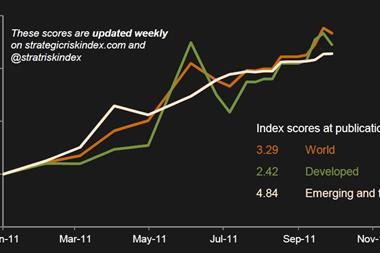Emerging markets promise big gains – and risk management challenges to match. Ambitious companies should follow these five steps to crossing frontiers
As the global economy continues to recover, fast-growing multinational companies have sought new markets. For some, this has included countries once considered undesirable due to political instability, poor economic prospects or undeveloped infrastructure - the so-called frontier markets.
These markets offer big opportunities in areas such as natural resources, real estate, communications and alternative and renewable energy. Many frontier markets also have pent-up demand for everything from housing to computers and telecommunications systems, with mobile solutions often leapfrogging the installation of land lines. Large domestic markets combine with low operating costs to make direct investment a highly attractive proposition.
The BRIC (Brazil, Russia, India and China) countries, long regarded as attractive targets for investment, continue to be the focus for multinationals, as well as offering increasingly competitive domestic markets.
But given that it is now the world’s second largest economy and represents almost 10% of global GDP, China is arguably no longer emerging. And competition is significant in such countries as Mexico, South Korea, Turkey and Indonesia.
Expansion into the BRICs or frontier markets requires companies to have a full understanding of the risk they are taking on and an actionable plan for managing it.
To compete in these markets, companies must transform their approach to risk management, playing offense rather than defense and recognising that risk management is an essential part of their growth strategy. Without a proactive approach to risk management, many companies enjoy initial success in these markets but can encounter big problems later. Establishing a risk management programme for frontier and emerging markets calls for five key steps:
1 Integrate risk management into the oversight structure and supporting processes
The company must identify at the outset what it wants to accomplish by taking on the risks of expanding into frontier markets. The risk framework must look at broad strategic risks and narrower financial and operational risks. If operational risk is given too little attention, it could lead to damaging losses.
2 Determine risks to assess
In one frontier market, there may be more than 100 risks. The firm may not want or be able to focus equally on all risks, so it must prioritise and choose among them based on size, consequence and possible impact on strategic objectives. Many firms do this by integrating changes into their enterprise risk management programme on a pilot basis. By launching it in one division, the company can gain a good understanding of the risks and how to mitigate them better across country operations.
3 Engage in continual re-evaluation
Risk management is not a static process, especially in rapidly changing frontier markets. Scenario planning should be a dynamic process that determines when corporate action should change in response to circumstances, be it political, economic or environmental. Scenario planning should also incorporate developments in other markets, which may have a direct impact on the country being evaluated.
4 Use qualitative and quantitative methodologies
Risks can be complex and companies often resist the effort to quantify them because large amounts of data are hard to simplify and analyse. Some companies do not rely on numbers to make decisions, while others look at risk too narrowly, limiting scope and depth of vision and failing to aggregate the risk at the top of the company.
What may sharpen these organisations’ view are stronger capabilities in risk prioritisation and measurement, scenario analysis and stress testing. These include qualitative risk assessment processes to prioritise risks, assess management and assign ownership.
5 Analyse, monitor and report risks
Companies need to agree on metrics and methodologies. What indicators will be reported to operational and executive management? How frequently will those results be monitored and reported? Can the process be automated to provide results in real time? An effective monitoring and reporting programme is the front line of risk management in frontier markets.
The potential rewards from ventures into frontier and emerging markets remain attractive. But companies entering such markets with a clear and well-developed plan for managing the full range of potential risks – operational, strategic and financial –are far more likely to achieve lasting success than those focused on a narrow band of financial and operational concerns. SR
Michael Chagares is executive director for risk management cross-industry services at Accenture and author of Managing Operational Risk with Eyes Wide Open; Phillip Straley is Accenture’s managing director for risk management in the Asia-Pacific region



















